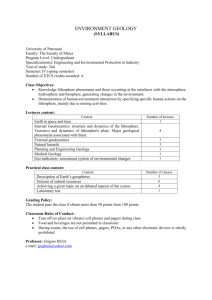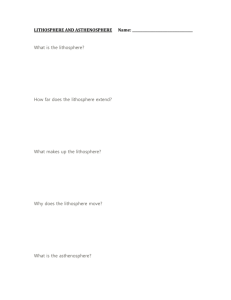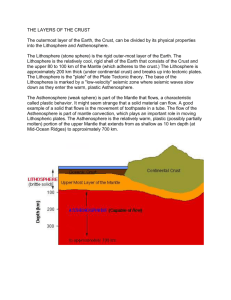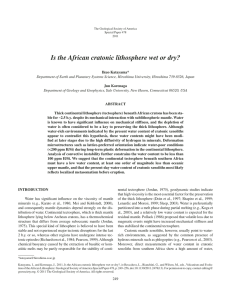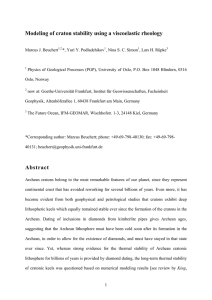Material properties and microstructure from
advertisement
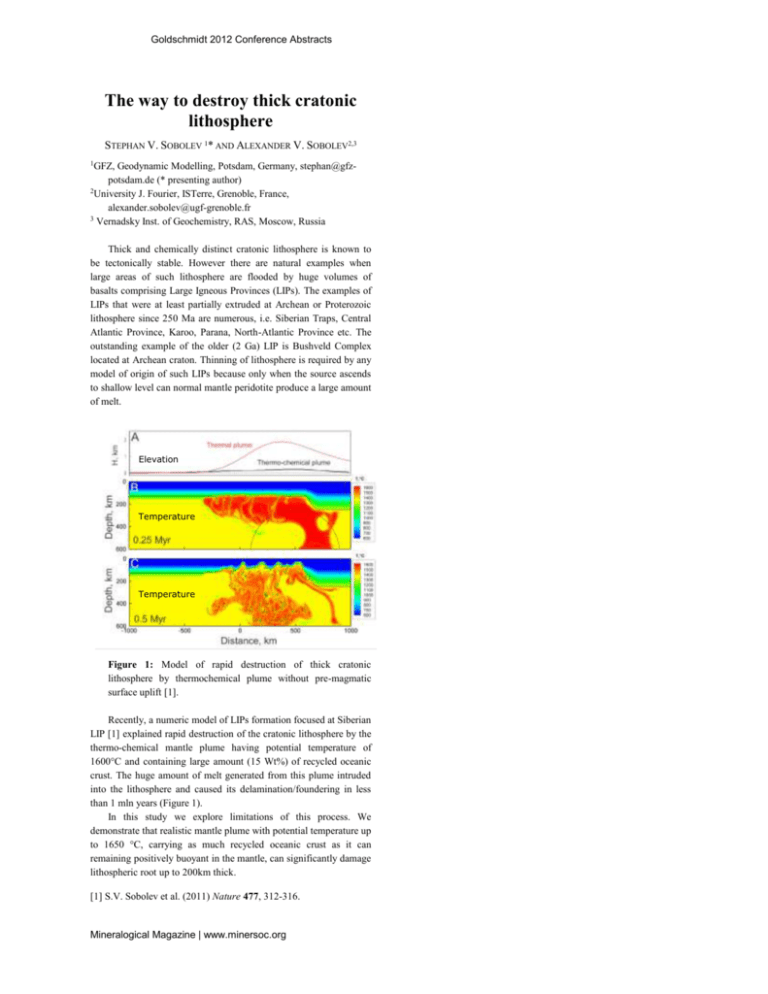
Goldschmidt 2012 Conference Abstracts The way to destroy thick cratonic lithosphere STEPHAN V. SOBOLEV 1* AND ALEXANDER V. SOBOLEV2,3 1GFZ, Geodynamic Modelling, Potsdam, Germany, stephan@gfzpotsdam.de (* presenting author) 2University J. Fourier, ISTerre, Grenoble, France, alexander.sobolev@ugf-grenoble.fr 3 Vernadsky Inst. of Geochemistry, RAS, Moscow, Russia Thick and chemically distinct cratonic lithosphere is known to be tectonically stable. However there are natural examples when large areas of such lithosphere are flooded by huge volumes of basalts comprising Large Igneous Provinces (LIPs). The examples of LIPs that were at least partially extruded at Archean or Proterozoic lithosphere since 250 Ma are numerous, i.e. Siberian Traps, Central Atlantic Province, Karoo, Parana, North-Atlantic Province etc. The outstanding example of the older (2 Ga) LIP is Bushveld Complex located at Archean craton. Thinning of lithosphere is required by any model of origin of such LIPs because only when the source ascends to shallow level can normal mantle peridotite produce a large amount of melt. Elevation Temperature Temperature Figure 1: Model of rapid destruction of thick cratonic lithosphere by thermochemical plume without pre-magmatic surface uplift [1]. Recently, a numeric model of LIPs formation focused at Siberian LIP [1] explained rapid destruction of the cratonic lithosphere by the thermo-chemical mantle plume having potential temperature of 1600°C and containing large amount (15 Wt%) of recycled oceanic crust. The huge amount of melt generated from this plume intruded into the lithosphere and caused its delamination/foundering in less than 1 mln years (Figure 1). In this study we explore limitations of this process. We demonstrate that realistic mantle plume with potential temperature up to 1650 °C, carrying as much recycled oceanic crust as it can remaining positively buoyant in the mantle, can significantly damage lithospheric root up to 200km thick. [1] S.V. Sobolev et al. (2011) Nature 477, 312-316. Mineralogical Magazine | www.minersoc.org





